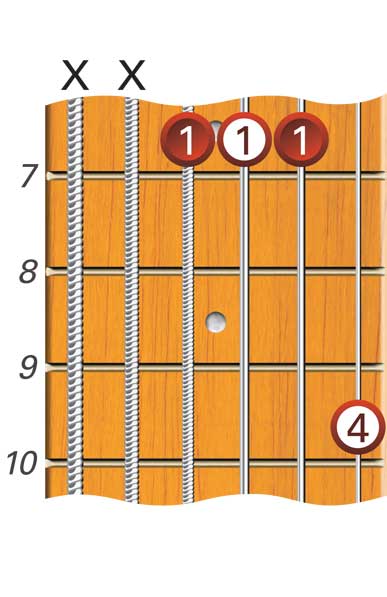
Movable Chords (Four Note Voicings)
Shown in the following diagram are 16 four note voicings of major chords. They are all derived from the five basic chord forms shown previously in the section on Movable Chord Shapes in Five Forms (C A G E and D). Be careful not to confuse the name of the chord with the name of the basic form which the chord shape is derived from.
The term "form" refers to the positions of the root notes and how they relate to an open chord shape. The name of the actual chord depends on the name of the root note. For example, if the root of a major chord shape at a given fret is a D note, then it is a D major chord regardless of the pattern formed by the root notes in the shape (which is what determines the name of the form).
Each shape is shown here as a D chord, but as always, it is essential to transpose them to all the other keys by sliding them up or down the fretboard to find the root note of the desired chord. The more you do this, the easier it gets, and the more comfortable you will feel playing anywhere on the fretboard.
C Form D

C Form D

C Form D

C Form D

A Form D

A Form D

G Form D

G Form D

G Form D

G Form D

E Form D

E Form D

E Form D

D Form D

D Form D

D Form D

Minor


A minor chord can be created by flattening the 3rd degree of any major chord. For example, a C major chord contains the notes C, E and G, (1, 3 and 5) while a C minor chord contains C, Eb and G, (1, b3 and 5). Shown in the following diagram are some common open minor chord shapes.